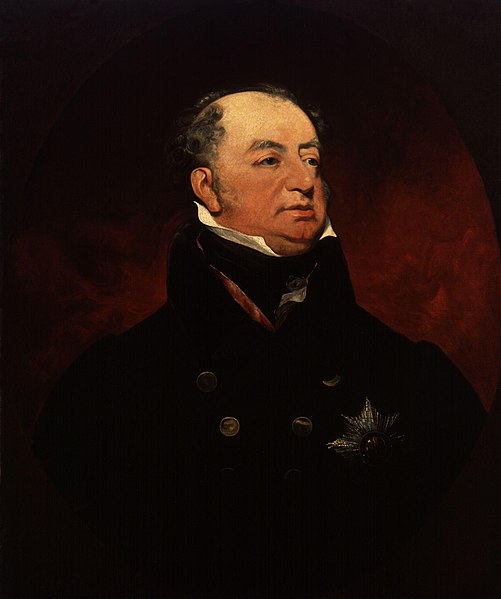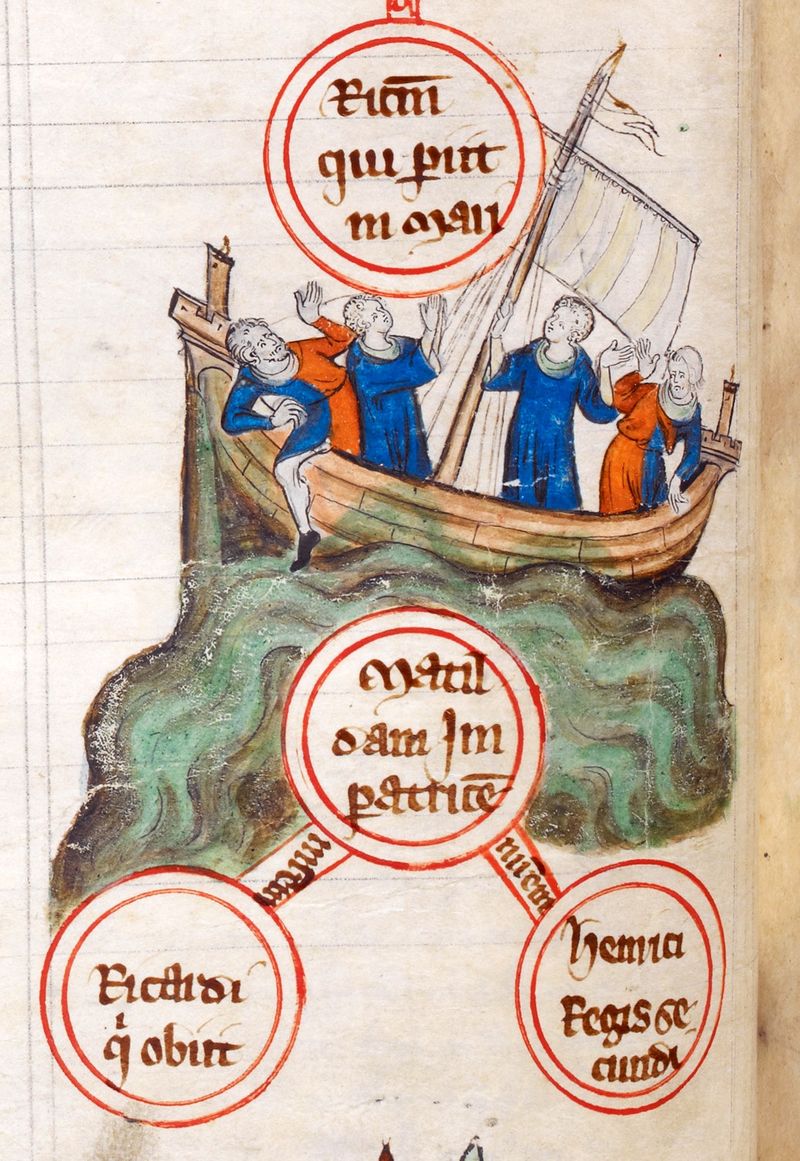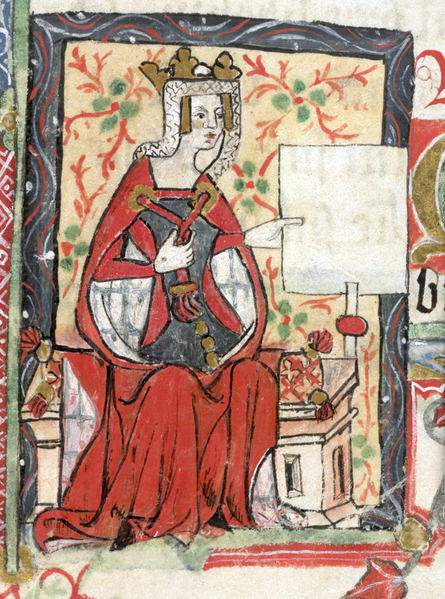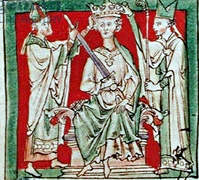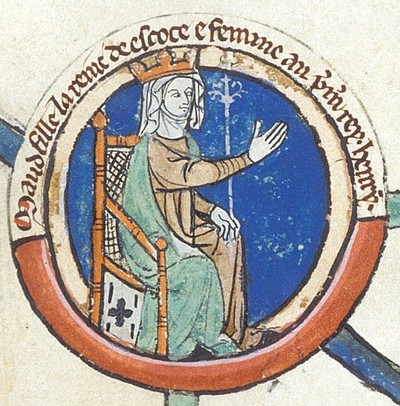by Scott Mehl © Unofficial Royalty 2016

Friederike of Mecklenburg-Strelitz, Queen of Hanover, Duchess of Cumberland; Credit – Wikipedia
Friederike of Mecklenburg-Strelitz was the wife of her first cousin King Ernst August I of Hanover. Through her two previous marriages, she was also a Princess of Prussia and a Princess of Solms-Braunfels. She was born on March 3, 1778, at the Altes Palais in Hanover, Electorate of Hanover, now in the German state of Lower Saxony, where her father – the future Carl II, Grand Duke of Mecklenburg-Strelitz – was serving as Governor of Hanover for his brother-in-law, King George III of the United Kingdom who was also the Elector of Hanover. Her mother was Princess Friederike of Hesse-Darmstadt.
Friederike was christened on March 15, 1778, and given the names Friederike Caroline Sophie Alexandrine. She had nine siblings:
- Duchess Charlotte (1769 – 1818) – married Friedrich, Duke of Saxe-Altenburg, had issue
- Duchess Caroline (1771 – 1773) – died in childhood
- Duke Georg Carl (1772 – 1773) – died in childhood
- Duchess Therese (1773 – 1839) – married Karl Alexander, 5th Prince of Thurn und Taxis, had issue
- Duke Friedrich (born and died 1774) – died in infancy
- Duchess Luise (1776 – 1810) – married King Friedrich Wilhelm III of Prussia, had issue
- Georg, Grand Duke of Mecklenburg-Strelitz (1779 – 1860) – married Marie of Hesse-Kassel, had issue
- Duke Friedrich Karl (1781 – 1783) – died in childhood
- Duchess Auguste Albertine (born and died1782) – died at one day old
Friederike’s mother died in May 1782, just days after giving birth to her last child. The family left the Altes Palais and moved to Schloss Herrenhausen, also in Hanover, Friederike and her siblings were raised by a governess Frau von Wolzogen. In 1784, her father married again to Princess Charlotte of Hesse-Darmstadt, his first wife’s younger sister. From this marriage, Friederike had one additional half-sibling:
- Duke Carl (1785 – 1837) – unmarried
In 1785, Friederike lost three of the people closest to her. In September, her elder sister, Charlotte married the Duke of Saxe-Hildburghausen and moved away, taking Frau von Wolzogen with her. In December, her stepmother (and aunt) died a few weeks after giving birth to her only child. Her father gave up his position in Hanover and the family moved to Darmstadt, Landgraviate of Hesse-Darmstadt, now in the German state of Hesse, where the children were raised by their maternal grandmother Princess Maria Luise of Hesse-Darmstadt. Friederike’s grandmother took charge of their education, ensuring that her grandchildren learned French and received a strong religious education. She also ensured that they traveled extensively to other royal courts, and they attended the coronations of the Holy Roman Emperors Leopold II in 1790 and Franz II in 1792.
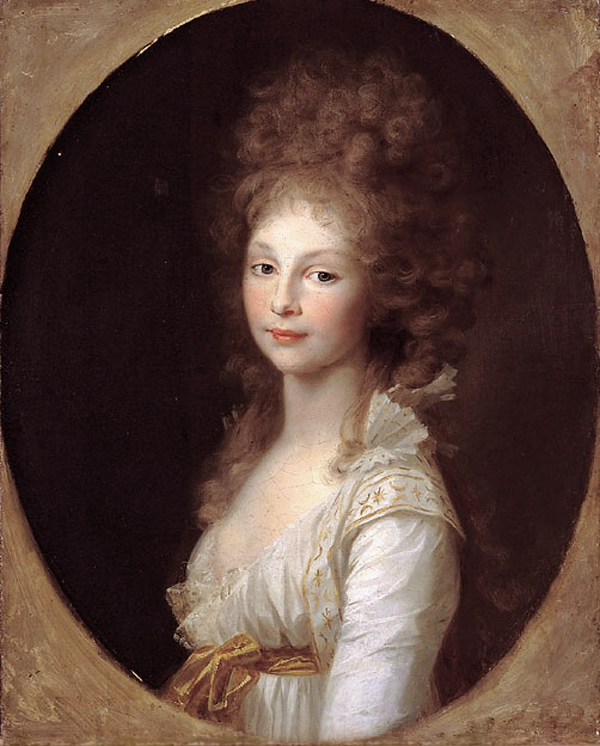
painted by Johann Friedrich August Tischbein. source: Wikipedia
Having left Darmstadt in 1792 to avoid the advancing French army, Friederike and her sister Luise returned to Darmstadt in March 1793. On the way back, they received an invitation to visit their mother’s cousin, the Landgrave of Hesse-Darmstadt, in Frankfurt, so that he could introduce them to King Friedrich Wilhelm II of Prussia, and more specifically, to his two sons. The sisters attended the theater in Frankfurt and were presented to the King, who found them quite charming. The following day, they were introduced to the King’s sons, Crown Prince Friedrich Wilhelm and Prince Ludwig. Relationships quickly developed, and just a month later, on April 24, 1793, the official engagements were announced. Luise was to marry the Crown Prince, while Friederike would marry Prince Ludwig. Always very close, Friederike and Luise were overjoyed that they would remain near to each other after their marriages.

Prince Ludwig of Prussia, painted by Edward Francis Cunningham. source: Wikipedia
After making their grand entrance into Berlin, the two marriages took place at the City Palace in Berlin, Kingdom of Prussia, now in the German state of Brandenburg. Friederike and Ludwig were married on December 26, 1793, just two days after her sister’s marriage. They took up residence at a townhouse in Berlin – just opposite the Crown Prince’s Palace – and had three children:
- Prince Friedrich of Prussia (1794 – 1863) – married Princess Luise of Anhalt-Bernburg, had issue
- Prince Carl of Prussia (1795 – 1789) – died in childhood
- Princess Friederike Wilhelmine of Prussia (1796 – 1850) – married Leopold IV, Duke of Anhalt, had issue

By Johann Gottfried Schadow – Till Niermann, CC BY-SA 3.0, https://commons.wikimedia.org/w/index.php?curid=4359214
In 1795, sculptor Johann Gottfried Schadow began work on a statue of Friederike and her sister Luise. The statue, known as the Prinzessinnengruppe, is displayed in the Friedrichswerder Church in Berlin.
The marriage between Friederike and Ludwig was not very happy, with both of them allegedly having affairs. Rumors spread that Friederike was having an affair with her husband’s cousin, Prince Ludwig Ferdinand. And the marriage was not to be long-lasting. Prince Ludwig died of diphtheria on December 28, 1796, just two days after their third wedding anniversary. Just 18 years old, and widowed with three small children, Friederike was given an income and a residence, Schönhausen Palace, by her father-in-law.
Two years later, In 1798, Friederike accepted a marriageproposal from Prince Adolphus of the United Kingdom, Duke of Cambridge, her first cousin. He was the seventh son of King George III of the United Kingdom and Charlotte of Mecklenburg-Strelitz, Friederike’s maternal aunt. However, King George III refused to consent to the marriage until the end of the war with the French revolutionaries. The couple continued their correspondence, both hoping that the war would soon end and they could marry.
However, Friederike was not very lonely. Despite her unofficial engagement to Adolphus, she soon found herself pregnant with the child of Prince Friedrich Wilhelm of Solms-Braunfels. He was the son of Ferdinand, 2nd Prince of Solms-Braunfels and Countess Sophie of Solms-Laubach. Friederike and Friedrich were quietly married in Berlin on December 10, 1798. The scandal caused a rift with her sister Luise, and enraged her aunt – and intended mother-in-law – Queen Charlotte of the United Kingdom. Friederike and Friedrich left the court in Berlin and moved to Ansbach, Kingdom of Prussia, now in the German state of Bavaria, where their first child was born two months later. Together they had six children:
- Princess Caroline of Solms-Braunfels (born and died 1799)
- Prince Wilhelm of Solms-Braunfels (1801–1868), married Countess Maria Anna Kinsky of Wchinitz and Tettau, had nine children
- Princess Sophie of Solms-Braunfels (born and died 1803)
- Princess Auguste Luise of Solms-Braunfels (1804–1865), married Prince Albert of Schwarzburg-Rudolstadt, had four children
- Prince Friedrich of Solms-Braunfels (1807–1867), married Baroness Louise of Landsberg-Velen, had one child
- Prince Carl of Solms-Braunfels (1812–1875), married (1) morganatically Louise Beyrich, had three children (2) Princess Sophie of Loewenstein-Wertheim-Rosenberg, had five children
Within a few years of the marriage, the couple had drifted very far apart. Friedrich resigned from his military posts, and Friederike had to support their family with her own resources. The marriage was so broken that her brother-in-law, the reigning Prince of Solms-Braunfels, advised Friederike, and gave his blessing, to divorce her husband. However, the couple remained married.
Prince Ernest Augustus, Duke of Cumberland, painting by George Dawe, c1828. source: Wikipedia
It was in 1813 that Friederike met the man who would become her third husband, Prince Ernest Augustus of the United Kingdom, Duke of Cumberland. Another first cousin, he was also the son of King George III of the United Kingdom and Friederike’s aunt Charlotte of Mecklenburg-Strelitz. Finding herself in love with her British cousin, Friederike asked for, and received, permission from the Prussian king to divorce her husband. Before proceedings could move forward, Prince Friedrich died suddenly on April 13, 1814. Many believed that Friederike had poisoned her husband, to avoid the public scandal of a divorce.
The Duke of Cumberland proposed, and Friederike accepted on the condition that her aunt, Queen Charlotte, gave her approval. The Queen did consent to the marriage, and the couple married on May 29, 1815, at the parish church in Neustrelitz, Grand Duchy of Mecklenburg-Strelitz, now in the German state of Mecklenburg-Vorpommern.
After the wedding, her husband returned to London to try – unsuccessfully – to get an increase in his appanage from the British Parliament. Despite being turned down, he returned to Germany and brought Friederike back to London, where they were married in a Church of England ceremony at Carlton House on August 29, 1815. One very notable absentee at the wedding was Queen Charlotte. Despite having given her consent the previous year, the Queen issued a statement explaining why she should not receive her new daughter-in-law. She stated that she had received “information from many respectable quarters which induced her to accept the painful resolution upon which she has since acted”, and that her feelings toward the marriage had been “conveyed to her son, The Prince Regent, not only long before the marriage of the Duke of Cumberland was solemnized in Germany, but also before the formal sanction of the Crown was given.”
Despite this, the couple settled in London, taking up residence at St. James’s Palace, as well as a home in Kew. After several years, with the Duke still unable to get an increase in his appanage, the couple returned to Prussia, living primarily in Berlin. After two stillborn daughters, the couple had one son:
- King Georg V of Hanover (1819 – 1878) – married Princess Marie of Saxe-Altenburg, had issue
Following their son’s birth, the British Parliament finally increased the Duke’s allowance, to provide him with a suitable education. The family spent the next ten years living in Germany, not returning to Britain until August 1829.
By then, Queen Charlotte had died, and Friederike’s brother-in-law was on the throne as King George IV. For the first time, she was welcomed as a full member of the British Royal Family and returned to her homes at St. James’s Palace and Kew. The following year, upon the death of King George IV and the accession of King William IV, her husband became the heir-presumptive to the throne of Hanover, and second in line to the British throne. After an accident left their son blind, in October 1833 Friederike and her husband took their son to Germany to meet with doctors, hoping to be able to restore their son’s sight. She was still in Germany when King William IV died on June 20, 1837. He was succeeded by his niece Victoria, as Queen of the United Kingdom. But because Hanover did not allow for female succession, Friederike’s husband succeeded him as King Ernst August I of Hanover, and Friederike became Queen.
Sadly, Friederike was only Queen of Hanover for a little less than three years. In April 1841, she fell ill, and after several months, passed away at the Altes Palais in Hanover on June 29, 1841. Following her funeral, the Queen’s remains were placed in the vault of the Royal Chapel. After her husband’s death 10 years later, both of their coffins were placed in a mausoleum on the grounds of Schloss Herrenhausen, now Herrenhausen Gardens).
This article is the intellectual property of Unofficial Royalty and is NOT TO BE COPIED, EDITED, OR POSTED IN ANY FORM ON ANOTHER WEBSITE under any circumstances. It is permissible to use a link that directs to Unofficial Royalty.
Unofficial Royalty Kingdom of Hanover Resources





























